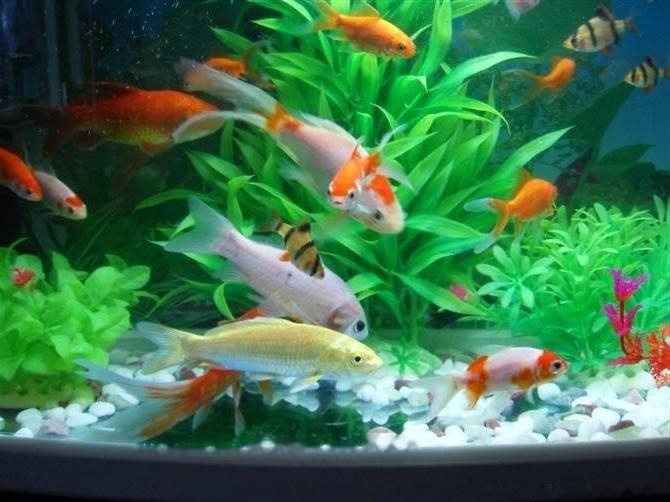
When raising ornamental fish, water quality control and water temperature are the key. Since the species of the fish and the breeding density also have different needs, it is recommended that the home-raised ornamental fish should preferably be fish from the nearby waters or related temperature zones. About the common sense of fish farming, follow the pet editor to learn about it!
1. The influence of fish tank water temperature on fish
1. Affecting life activities:
Within the appropriate temperature range, the life activities of fish can be carried out normally. In the appropriate water temperature range, the physiological activities of fish can be carried out normally. Beyond this limit, the fish die. 2. Divide 5 temperature zones:
Lethal low temperature zone, sub-lethal low temperature zone, suitable temperature zone, sub-lethal high temperature zone, lethal high temperature zone. The sub-lethal low temperature zone or the sub-lethal high temperature zone refers to the water temperature range between the suitable temperature zone and the lethal temperature zone.
3. Affect the growth of fish:
The feeding intensity of fish, the rate of digestion and absorption of food, the growth rate, the embryonic development and the time to reach sexual maturity are all affected by the water temperature. direct impact.
4. Van Hoof's law:
In the suitable temperature range, when the water temperature rises, the body temperature of the fish will rise, and the physiological process in the body will be accelerated. . That is, for every 10°C increase in temperature, the rate of physiological processes increases by a factor of 2-3 (Hoff's law). Water temperature affects the intensity of various physiological activities of fish.
5. Affecting fish spawning:
Water temperature is of decisive significance to the arrival of fish spawning period. Spawning begins, and the spawning water temperature of salmon is below 12°C.
6. Seasonal changes:
A certain water temperature is a stimulus for fish spawning. Fish spawning in spring require heating, while those spawning in autumn and winter are Ask to cool down.
2. Division of water temperature adaptation of fish
1. Warm water fish:
These fish are adapted to temperate water temperature conditions, above 0 ℃ To 32-33 ℃ water temperature can survive.
2. Cold-water fish:
These fish are adapted to the water temperature conditions of the frigid zone and sub-frigid zone. They can live normally in the lower water temperature, and the temperature exceeds 20-22 ℃. difficult to survive.
3. Tropical and subtropical:
These fish are adapted to tropical and subtropical water temperature conditions, require a higher water temperature environment, and can live in higher water temperature waters.
4. Adaptation according to temperature:
Extensive temperature fish have the widest range of temperature adaptation, and most of them are warm water fish. The narrow temperature range of fish is narrow, mostly tropical and subtropical fish and cold water fish.
3. Tips for temperature control in family fish farming
1. Consider the water environment:
It is best for family fish to be kept in nearby waters or at the relevant temperature brought fish. Because such fish are in a similar environment, the breeder can easily grasp and control the growth environment of the fish.
2. Consider the cost and time:
If you need to breed cold fish in tropical areas, or breed tropical fish in cold areas. In this way, the breeder will spend more cost and energy to build a more suitable water temperature environment for the fish.
3. Install a heating device:
Install a heating device in the fish tank where the fish are cultured. In summer, you don't need to turn on the heating device. When it is cold in winter, you need to turn on the heater to provide a more comfortable water temperature environment for the fish.
4. Seasonal change regulation:
If the water temperature is low in winter, the fish will swim slowly and refuse to forage, so aquarists should control the water temperature well , in order to ensure the normal life of the fish.
![[Dog Training 5] The training method of pet dog dining etiquette](/static/img/12192/12192_1.jpg)




